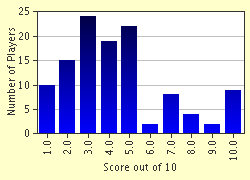Quiz Answer Key and Fun Facts
1. The first castle of this quiz is located in south Gloucestershire. It was commenced by the 3rd Duke of Buckingham in 1511, and the building of this castle stopped in 1521 when the Duke was beheaded.
2. The second castle of our tour is located in north-east England, more precisely in Northumberland, and has been a stronghold of the Percy family since 1309. Which of these is it?
3. Our third castle is about a mile and a half north of Sandwich, East Kent, Britain, and is believed to be on the site where the Roman invasion of Britain started 43 AD.
4. The fourth stop in this quiz on European castles involves a change of scenery. It is located near Cork, in Ireland, and was originally a timber hunting lodge. In 1210 this was replaced by a stone castle.
5. Our next castle is located in Normandy in France, and when it is high tide, you don't want to be left on the castle: it becomes surrounded by water!
6. A castle first built in the 16th century, our sixth building is found in Scotland, on the north bank of the River Eden. The Bishop of St. Andrew was the first to own this property, and King David II spent a lot of time as a child there.
7. The seventh stop on our castle tour is a castle built from love, by King Johan III for his queen Katarina in the late 16th century. It is located in Sweden, and since 1981 has been a residence of the Royal Family.
8. A beautiful castle located on a hill overlooking Cardigan Bay, this Welsh artwork has a twin tower gate house, used as a defence mechanism.
9. The next castle will take us back to the loveliness of Scotland, to the home of the Earls and Dukes of Atholl, and has a tower traditionally know as Cumming's tower.
10. The last castle on our tour is located in the northern part of Europe - Finland. This island castle was founded in 1475 by Erik Alexsson Tott, and in its lifetime has been under both Swedish and Russian rule.
Source: Author
junepearl
This quiz was reviewed by FunTrivia editor
bloomsby before going online.
Any errors found in FunTrivia content are routinely corrected through our feedback system.


